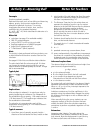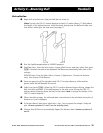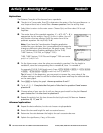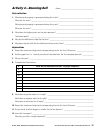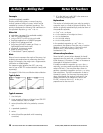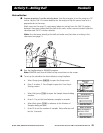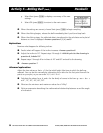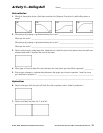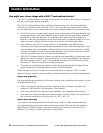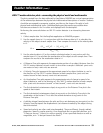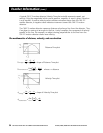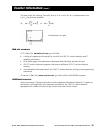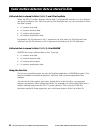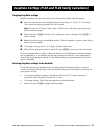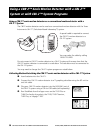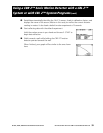
32 GETTING STARTED WITH THE CBR 2™ SONIC MOTION DETECTOR © 1997, 2004, 2006 TEXAS INSTRUMENTS INCORPORATED
Teacher Information
How might your classes change with a CBR 2™ sonic motion detector?
The CBR 2™ motion detector is an easy-to-use system with features that help you integrate it
into your lesson plans quickly and easily.
The
CBR 2™ motion detector offers significant improvements over other data-collection
methods you may have used in the past. This, in turn, may lead to a restructuring of how
you use class time, as your students become more enthusiastic about using real-world data.
0 You’ll find that your students feel a greater sense of ownership of the data because they
actually participate in the data-collection process rather than using data from textbooks,
periodicals, or statistical abstracts. This impresses upon them that the concepts you
explore in class are connected to the real world and aren’t just abstract ideas. But it also
means that each student will want to take his or her turn at collecting the data.
0 Data collection with CBR 2™ motion detector is considerably more effective than
creating scenarios and manually taking measurements with a ruler and stopwatch. Since
more sampling points give greater resolution and since a sonic motion detector is highly
accurate, the shape of curves is more readily apparent. You will need less time for data
collection and have more time for analysis and exploration.
0 With CBR 2™ motion detector students can explore the repeatability of observations and
variations in what-if scenarios. Such questions as “Is it the same parabola if we drop the
ball from a greater height?” and “Is the parabola the same for the first bounce as the
last bounce?” become natural and valuable extensions.
0 The power of visualization lets students quickly associate the plotted list data with the
physical properties and mathematical functions the data describes.
Other changes occur once the data from real-world events is collected.
CBR 2™ motion
detector lets your students explore underlying relationships both numerically and graphically.
Explore data graphically
Use automatically generated plots of distance, velocity, and acceleration with respect to time
for explorations such as:
0 What is the physical significance of the y-intercept? the x-intercept? the slope? the
maximum? the minimum? the derivatives? the integrals?
0 How do we recognize the function (linear, parabolic, etc.) represented by the plot?
0 How would we model the data with a representative function? What is the significance
of the various coefficients in the function (e.g., AX
2
+ BX + C)?
Explore data numerically
Your students can employ statistical methods (mean, median, mode, standard deviation,
etc.) appropriate for their level to explore the numeric data. When you exit the EasyData
application or RANGER program, a prompt reminds you of the lists in which time (L1),
distance (L2), velocity L3), and acceleration (L4) are stored.



